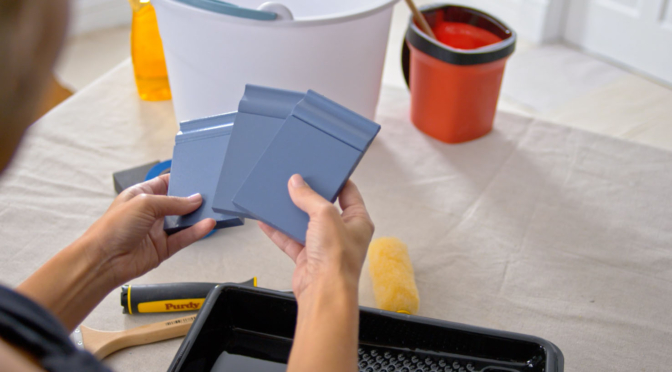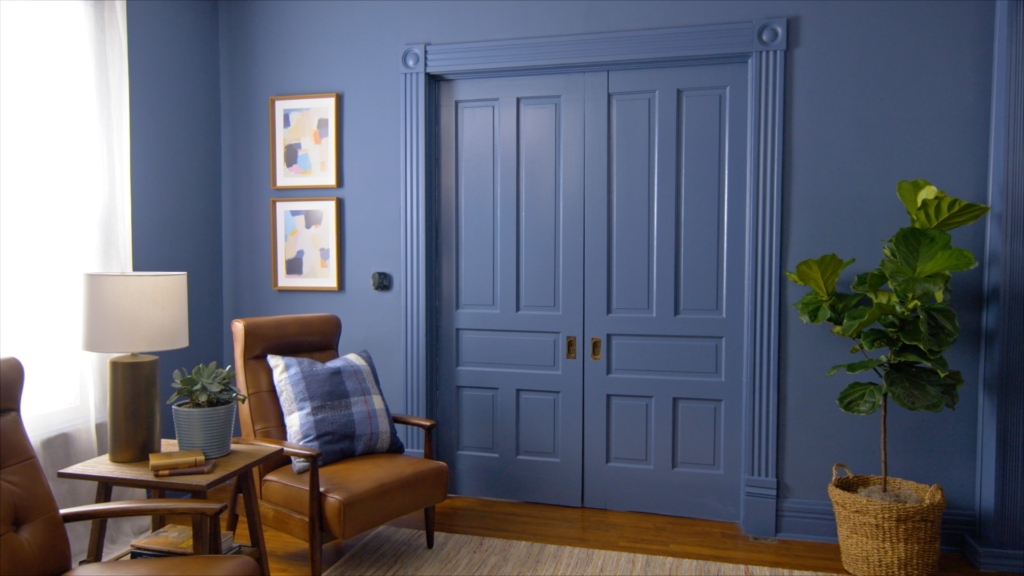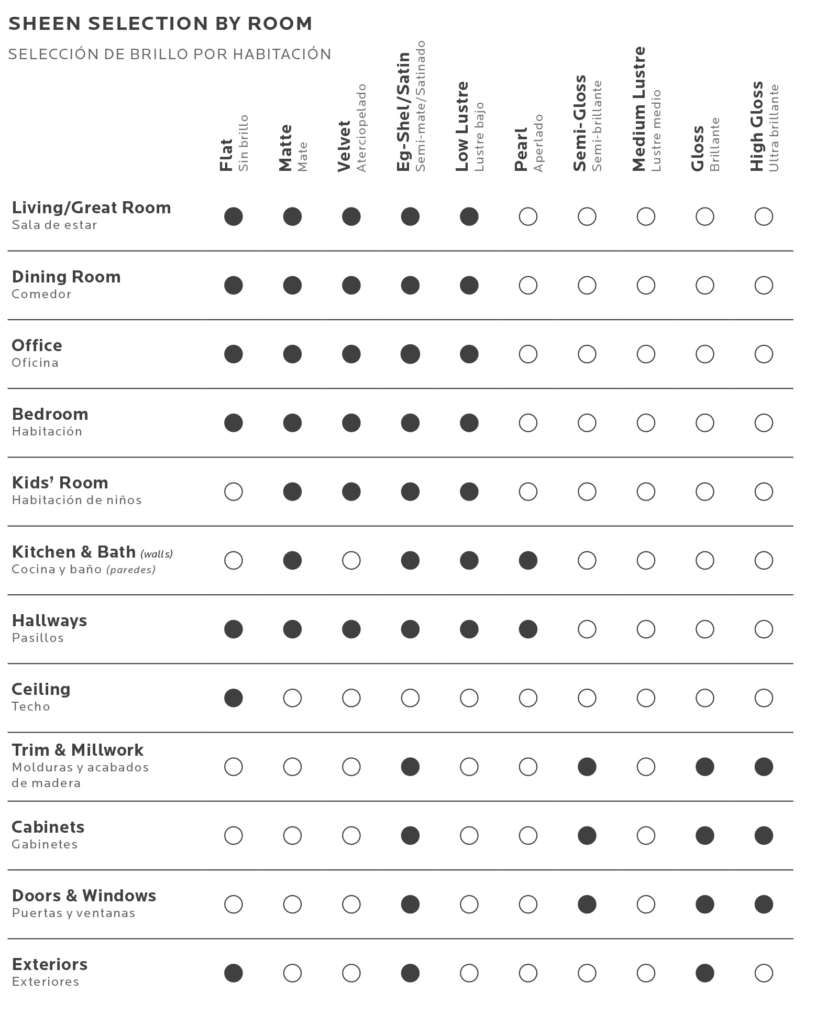You’ve found the perfect color. Now let’s choose the right sheen.
Most of the homeowners you work with probably have strong feelings about the colors you paint on their walls. But more and more customers are also concerned about sheen choice—and it’s not hard to understand why.
The sheen you choose can have just as big an impact on the final look as the color selected. Finding a sheen that matches the homeowner’s vision can be the difference between a five-star review and time-consuming callbacks.
At its most basic, gloss and sheen determine how paint will interact with light. How will this paint look during the day? How will it look at night? Are the main light sources in this room natural or artificial? Does this wall have imperfections that need to be hidden?
These are all important questions to consider when purchasing paint for a job, and it’s up to you to advise homeowners on which sheen is right for their unique situation.
Thankfully, you don’t have to handle that responsibility alone. This guide will walk you through the most important sheen considerations and eliminate guesswork, so you can give homeowners tailored recommendations with confidence.
What Are Gloss and Sheen?
But first, we need to go over a few basics. Every Sherwin-Williams product has a gloss or sheen value, and some have both. What’s the difference? Gloss is measured at a 60° angle, while sheen is measured at an 85° angle. The paint’s reflectance at these angles is measured from 0 (no gloss) to 100 (mirror-like).
In terms you can easily tell a homeowner: a product’s gloss or sheen value tells you how shiny that paint will appear when it is fully dry.
In its most recent Gloss & Sheen Guide, Sherwin-Williams lists 10 different sheens, sorted into five surface finish categories that showcase the full spectrum of light reflectance: flat, satin, semi-gloss, and gloss.
Flat: Flat’s lusterless sheen absorbs light rather than reflecting it. This helps hide surface imperfections. Flat paints are generally the hardest to clean, however.
Matte: This finish provides the soft look of a Flat sheen but offers the durability and washability of Eg-Shel/Satin.
Eg-Shel/Satin: As a finish with a slight shine that offers washability while hiding minor wall imperfections, Satin sheens blend the best of both worlds—making it ideal for high-traffic areas.
Semi-Gloss: Semi-Gloss is a durable, moderately reflective sheen that’s great for areas that are likely to get scuffed, nicked, or stained.
Gloss: Gloss sheens have the highest light-reflective characteristics and may even appear shiny. They boast an extremely hard, lustrous, and washable finish that’s a good choice when you want to draw attention to a particular room element.
You can see the difference for yourself in the below image, which features the same color—Distance SW 6243 (224-C6)—in three different sheens. The walls are painted with a Flat finish, the trim with a Satin finish, and the doors with a Gloss finish. Notice the difference in light reflectivity between all three.
How to Recommend Sheen to Homeowners
While there are many options, keeping a few useful rules of thumb in mind can help you guide customers to the right sheen for them.
Standout or Subtle?
- Paints with a lower gloss/sheen will hide wall imperfections better and draw less attention than paints with a higher gloss/sheen.
- If your customer wants to hide wall scuffs or nicks, start by recommending a flat or matte sheen.
- Flat or matte sheens are also good choices when painting a feature that you don’t want to call attention to, such as a ceiling or a small hallway.
Durability
- Paints with higher gloss/sheen levels are easier to clean and more durable.
- As a result, areas that require regular cleaning or maintenance—especially high-touch areas—will benefit from paints with a higher gloss/sheen.
- Pro tip: There are exceptions to this rule! For example, products like Emerald® and Duration Home® paint provide exceptional washability, durability, and stain resistance even at low gloss reflectance levels. Talk to your local Sherwin-Williams representative for product-specific recommendations.
Light Quantity
- Consider the amount of light in the room where you’re painting.
- Try to pair well-lit rooms with low gloss/sheen paints. Pairing a brightly-lit room with a highly reflective paint could lead to excessive glare.
- In rooms with low lighting, amplify the light that does exist with a higher gloss/sheen paint that reflects it.
Eye-Catching Details
- High gloss/sheen draws the eye and can add depth or interest to a room’s overall design.
- As a result, Gloss and Semi-Gloss sheens are popular choices for trim, cabinets, doors, and windows.
Have a Reference?
- For situations where you need to match a new coating to existing gloss or sheen, use the ColorSnap® Match Pro.
- This tool can instantly and accurately match any surface to the closest Sherwin-Williams color and sheen without a physical sample within seconds.
Conclusion
Using these guidelines, you can now guide homeowners to specific sheen recommendations. Show potential customers your expertise and help them achieve a flawless finish that will leave them satisfied.
For personalized sheen recommendations and more information, contact your local Sherwin-Williams representative. You can also get more detailed information on different sheen options and find answers to commonly asked questions—like how to fix uneven paint sheen—at the Sherwin-Williams Project Center.
And if you just need a quick room-by-room reference for your next job, bookmark this page and use our handy Sherwin-Williams Sheen Selector cheatsheet below!




